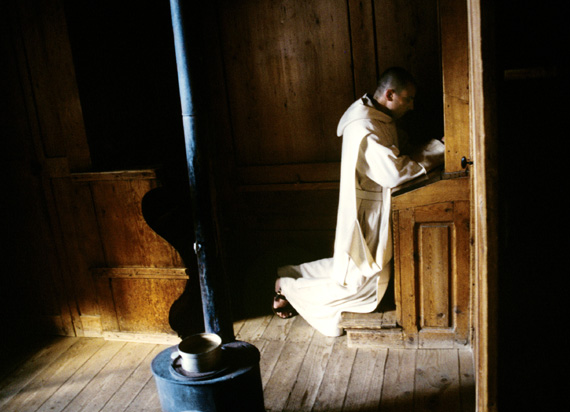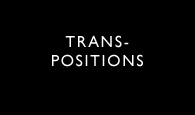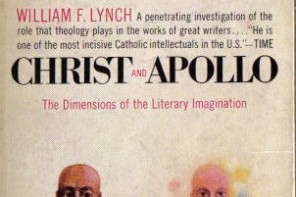And in the naked light I saw
Ten thousand people, maybe more.
People talking without speaking,
People hearing without listening.
People writing songs that voices never share.
And no one dared,
Disturb the sound of silence.–Simon & Garfunkel, “The Sound of Silence”
It was this song, first recorded around 1963 and re-released to widespread acclaim in 1966, that catapulted Paul Simon’s musical career. While the song suggests a certain post-adolescent angst of living in a world in which “nobody’s listening to me, nobody listens to anybody,” it also seems to foreshadow the unique sense of isolation and disconnection so common today. [1] As we are so often “people talking without speaking” and “ people hearing without listening ,” Simon’s voice remains that of the prophet speaking into the not-hearing present.
Perhaps the greatest culprit of noise and distraction in our lives stems from technology. Technology is changing not only the way we interact with one another but the way we interact with ourselves and the world around us.[2] It is argued that our ability to be continually plugged in leads to our inability to be fully present. Scientists now suggest that constant access to technology creates a state of “continuous partial attention” such that we’re in a perpetual state of busyness. As such, we are “keeping tabs on everything while never truly focusing on anything.”[3]
In navigating the dull roar of daily experience is it possible that we have become a “people hearing without listening”?
If so, perhaps the only way to truly regain our hearing is through silence.

This may be felt no more poignantly than in Philip Gröning’s film Into Great Silence (2005). At least this is where I was confronted with my own habituation to noise – or perhaps better stated: my own discomfort with silence.
In brief, Gröning’s Into Great Silence gives an intimate glimpse into the rhythms of life for a community of Carthusian monks in the Grand Chartreuse located in the French Alps. This is the home of arguably the most ascetic monastic order.
While watching, one can’t help but feel a sense of being out of place, as if you’re eavesdropping on the conversation of a pair of lovers (which is perhaps what we do when we listen in and look on to the secret prayers of these reclusive saints).
Filming on sight, Gröning strips the soundtrack of his film to the most elementary echoes of monastic living: coughs interjected into silent prayer, the shuffling of feet on cold wooden floors, the chopping of fire wood, the chanting of Psalms, the ringing of tower bells.
Yet despite the profound beauty of such stripped down simplicity (or maybe precisely because of it), the overwhelming effect of the film is one of discomfort. One finds that it is a profound challenge to sit through 169-minutes of near total silence. Yet it precisely this discomforting effect which lends Into Great Silence its power to diagnose our capacity to endure (or decry) silence.
While the Carthusians may over-realize the renunciation of all things (Luke 14:33) and under-realize the conception of mission as “being-in-the-world” (Matt 28:18-20), the ascetic Carthusians in the Grand Chartreuse have much to offer if we but have ears to hear.
The modern church needs to heed the gifts to be discovered in the spiritual discipline of silence.
Silence, as the monks beautifully show us, is not absence but fullness, not isolation but the deepest engagement. The discipline of regular rhythms of silence can train us to filter out the noise pollution. As resting enables us to work, disengagement from noise enables engagement with the voices that matter.
Though it wasn’t born out of a deep, profound experience, Simon says “The Sound of Silence” still did have some level of truth that resonated with millions “because it had this very simple and sing-able and memorable melody.” No matter how profound, Simon claims that lyrics cannot be received unless accompanied by the proper sound. “My thinking is that if you don’t have the right sound and if you don’t have the right melody, it doesn’t matter what you have to say. People don’t hear it,” he says. “They are only available to hear when the sound entrances and makes people open to the thought.”
If we hope to tune our ears to hear those who matter most, the words must be accompanied by the right sound. The sound that entrances, the sound that makes us open to the thought, is often the sound of silence.
[1] Simon, Paul. Interviewed by Terry Gross. NPR Fresh Air, December 11, 2000.[2] Small, Gary, and Gigi Vorgan. “Meet Your iBrain.” Scientific American Mind 19, no. 5 (October 2008): 42-49.
[3] Ibid, 46.
Kevin M. Antlitz is a Ministry Fellow with Christian Union at Princeton University.





This is one of the reasons why I love the mountains in Colorado. Silence. And Beauty.